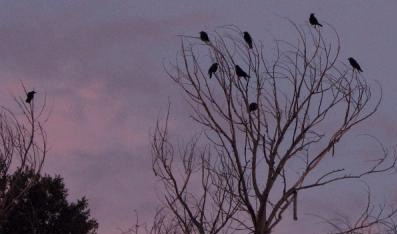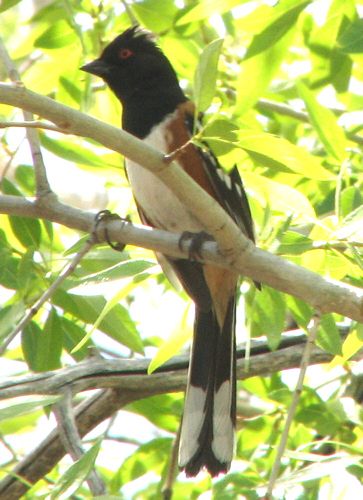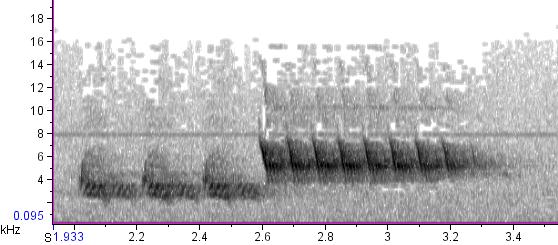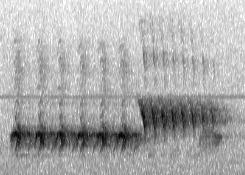- List of Species Observed in RioEmbudoBirds.org area (Updated 2023):
- All Seasons, All Species
- Species Present All Year
- Winter Visitors
- Spring-Fall Transients
- Migrant Summer Breeders
- Non-breeding Vagrants
- Observing Birds
- Local Bird Counts
- Bird Migration
- Bird Song and Sound
Bird Song and Sound
Birds are, in general, noisy creatures. Sound is employed by birds for many reasons. Sometimes a simple "tic" can just be a way of letting other members of a flock know where another is. At other times, a male may sing a long, complicated song when trying to entice a female to mate. It is sometimes said that maybe 85% of birding is done by sound. One often hears a bird before it is seen. Indeed, when working on official bird counts, a bird that is heard, but not seen is counted just as if it had been seen. There are many visually impaired birders who can identify every bird in a given local just by their sound.
Here is a Curve-billed thrasher Toxostoma curvirostre singing on Camino Lejo in Santa Fe near Museum Hill:
 American Crows in silhouette at daybreak.
American Crows in silhouette at daybreak.
American Crows
Corvus brachyrhynchos making a racket!
Press the play button: This recording was made July 21, 2006 in el Bosque in Dixon. These American Crows were sitting in the top of the cottonwoods making quite a racket. If this "mobbing" sound had been made at any other time of the year, it would have signaled the presence of a Hawk or an Owl. But when the breeding season is finished and the Crows are no longer competing for food, they get very social. Every morning for weeks, 15 to 50 crows would gather in los Alamos at the bottom of Ben and Charlotte Valdes' fields about 5:00 AM. The "crowing" would go on for as much as an hour as more and more birds flew in. Then, suddenly, they would stream away and the quiet would return.
The Song of the Spotted Towhee (Pipilo maculatus).
 Spotted Towhee, Dixon, NM.
Spotted Towhee, Dixon, NM.
Press play to hear the Spotted Towhee singing in El Bosque in Dixon:
This bird's song might be the most regularly heard song in the riparian and agricultural areas of Dixon and Embudo. It is described by one local birder as: chup, chup, chup, cheese. With the "cheese" being a trill. This Towhee sings in all seasons. This recording was made in early August in El Bosque in Dixon.
What you see below are called Sonograms. The two pictured were made from this recording. The vertical axis is frequency (~pitch) and the horizontal axis is time in seconds.
Sonogram of Spotted Towhee singing in El Bosque

Zoomed view of the first phrase.


This particular audio clip is 30 seconds out of a 15 minutes recording.
I chose this section, because the chup, chup, chup, cheese pattern is the most commonly heard rendition.
However, the full recording reveals a great amount of variation. All of the following appear in the full recording:
Variation in number of the "chup" syllables:
chup, cheese;
chup, chup, cheese
chup, chup, chup, chup, cheese
chup, chup, chup, chup, chup, cheese
chup, chup, chup, chup, chup, chup, cheese
chup, chup, chup, chup, chup, chup, chup, cheese
As well as variation in order of the syllables:
cheese, chup, chup, cheese
cheese, chup, cheese
And, single syllables:
cheese
chup
And more!
By the way: The main bird heard in the background is a Yellow-breated Chat.
Copyright 2006-2021 by Rio Embudo Birds.org --- All rights reserved.

